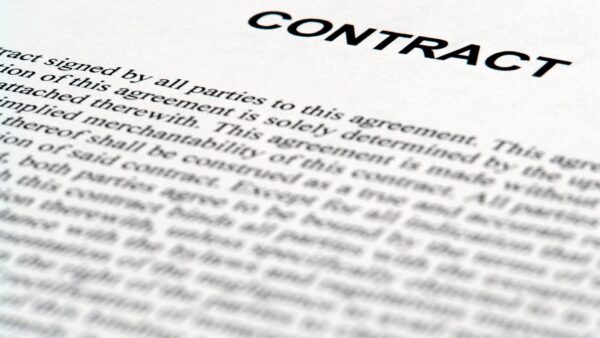
This month’s contract clinic question comes from a contractor worried about a drone flying over their site. Aerial photography expert Paul Stinson looks at the legal position.
The question
Someone is flying a drone over our site and filming images without our permission. We think it may be for industrial espionage, or at least unsafe. Is there anything we can do to stop it?
The answer
This is an increasing challenge for all business owners, not just construction companies managing projects, as drone technology has become cheaper and more easily available. The flying of drones in the UK is regulated by the Civil Aviation Authority. But the rules are not as simple as you might think.
Data and privacy
Let’s start with GDPR (General Data Protection Regulation) and associated privacy laws. There are two issues here. Firstly, GDPR only applies to organisations carrying
out recording, not to individuals. And in any case, consent may not be needed, even where a business is doing the recording.
In terms of privacy, rules tend to apply where there’s a ‘reasonable expectation of privacy’. As recently as last year, the courts ruled that even suspects of crime can have a reasonable expectation of privacy. Last month, the Supreme Court found in favour of the Neo Bankside residents in their case against Tate Modern. However, that expectation wouldn’t normally apply in the general workplace or in public.
An argument often raised concerns property rights and trespass. However, trespass is a civil matter unless damage occurs, then damages may be recoverable in tort. But a drone is likely to be in the air, which is not part of the property, and is usually flown from the public realm.
Airspace and safety
Control of airspace is again the domain of the Civil Aviation Authority, so the chances are that won’t be something you can do anything about. The only exception to this might be if your site is in a controlled airspace. These generally exist around airports and airfields, prisons and one or two other sites, such as the homes of members of the royal family.
Controlled airspace is often protected by drone jamming technology. These areas are determined by NATS (National Air Traffic Services). There is an app called Drone Assist, which outlines where all the flying restrictions lie. Intelligent drones, those with GPS, are pre-programmed by the manufacturer to disable take-off in a controlled zone.
Safety is another argument occasionally cited. But, provided the unmanned aerial vehicle (UAV) is lightweight and flying at a reasonable height, it would be hard to prove a demonstrable risk to health and safety.
So, having dealt with all the initial reasons that might inhibit the use of a drone, what remains is the drone and its operator.
By law, a UAV cannot fly unless registered by its operator, who must have an operator ID. That ID must be visible on the drone. The pilot must also have a flyer ID. However, unless a drone has landed or crashed, it can be impossible to see the operator ID. A flyer is not obliged to show their ID, unless a police officer has reasonable grounds to suspect a crime is being committed.
Weighing up the issues
The drone may be restricted in where it can fly, if it is over 250g. However, if it is under 250g, it can fly almost anywhere provided it is below 400ft (122m) from the surface and is within visual line of sight of the pilot. That is likely to include overflying your site.
The CAA gives some helpful factsheets on its website and you should also check out the latest regulations it has published on unmanned aerial systems (UASs).
So, in summary, it seems there are a few questions you should ask: Is the drone 250g or less? If so, then it can fly over your site.
- Is the site in a restricted area? If not, then it can fly over your site.
- Does the drone have an operator ID displayed? If so, it can fly over your site.
- Is the drone being flown by someone with a flyer ID? If so, then it can fly over your site.
- Is there a GDPR or privacy breach? It is very unlikely, so the drone can probably fly over your site.
Ultimately, unless there’s a very good reason in law for the drone not to fly across the site, then the pilot will likely be able to fly the drone. And there’s very little at all that can be done to prevent it except with jamming technology which must be licensed in the UK.
Paul Stinson, managing director of aerial photography company Hovaloft, was speaking with Stuart Wilks, director at consultancy Limeslade.











